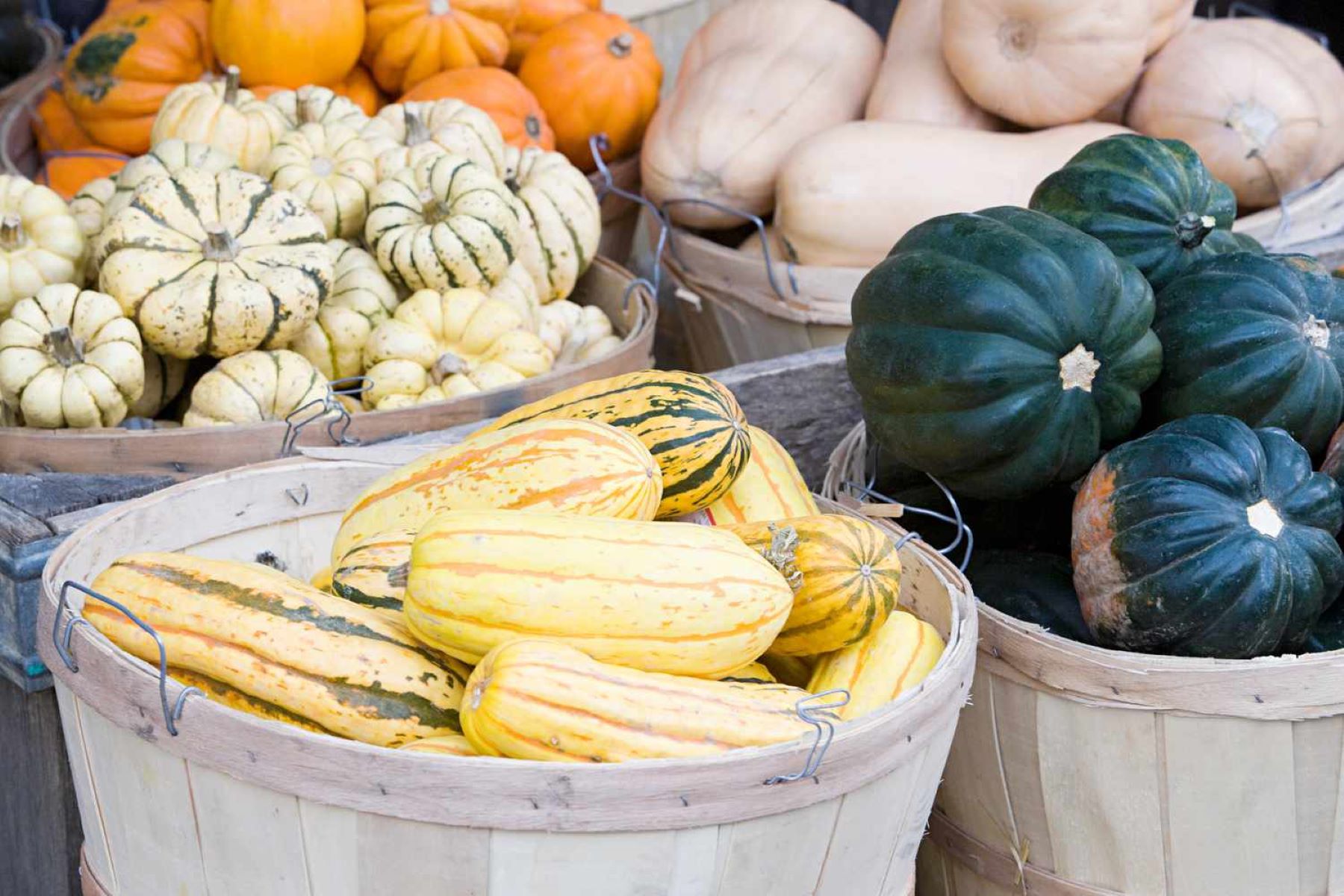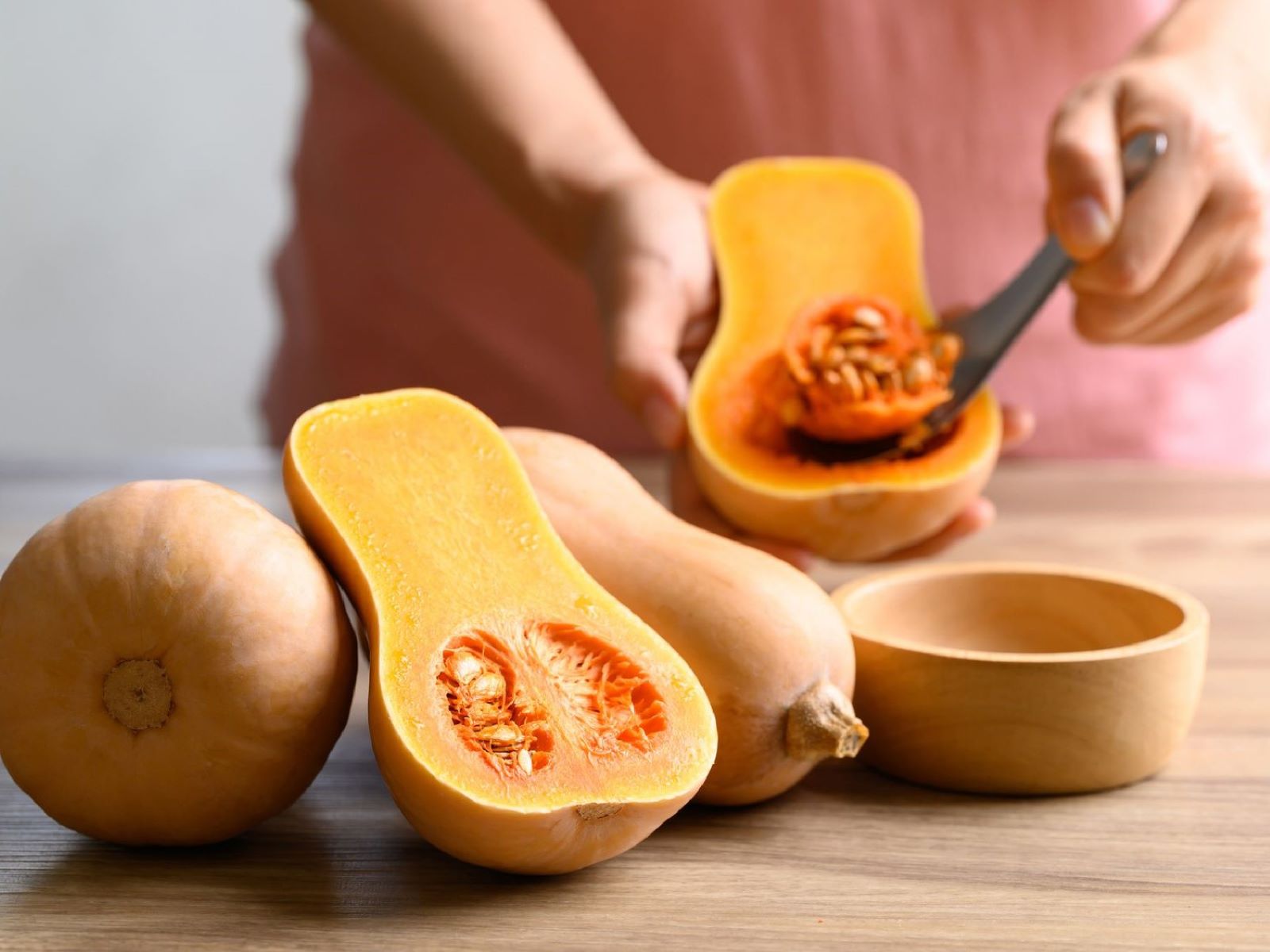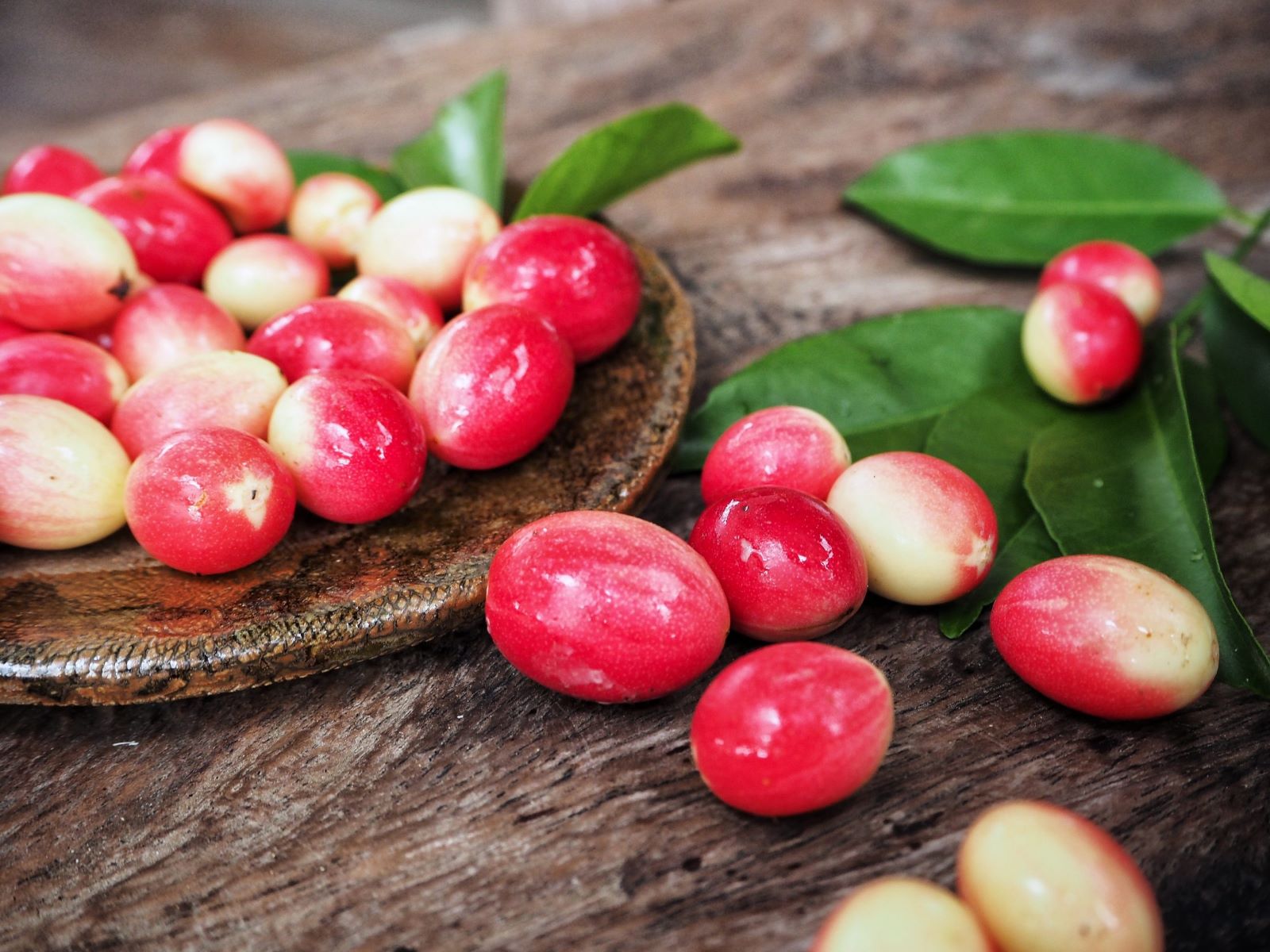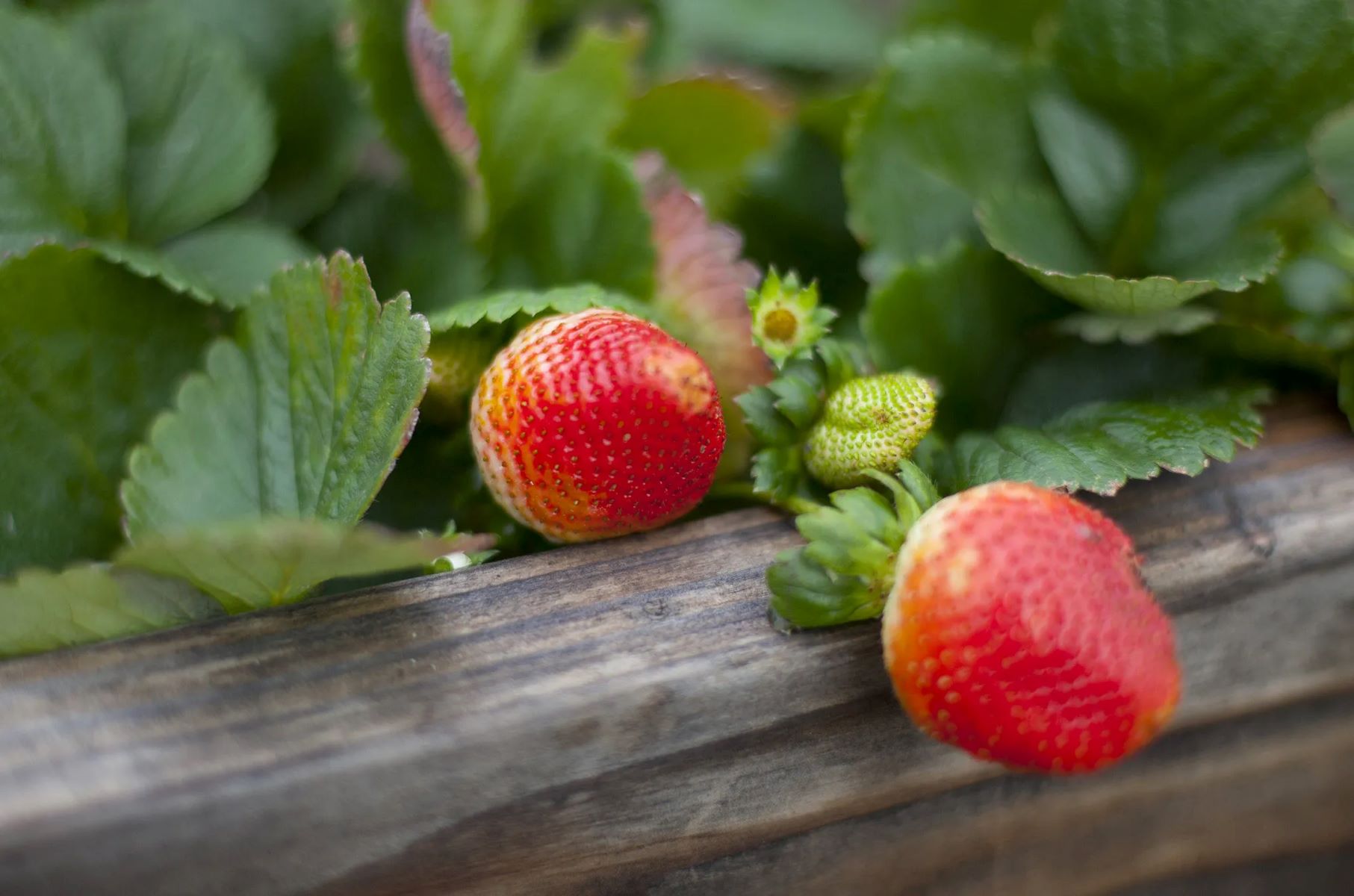Home>Food and Cooking>The Surprising Truth About Pumpkin And Squash: Are They Fruits Or Vegetables?


Food and Cooking
The Surprising Truth About Pumpkin And Squash: Are They Fruits Or Vegetables?
Published: January 31, 2024
Uncover the truth about pumpkin and squash - are they fruits or vegetables? Explore the fascinating world of food and cooking with this surprising revelation.
(Many of the links in this article redirect to a specific reviewed product. Your purchase of these products through affiliate links helps to generate commission for Regretless.com, at no extra cost. Learn more)
Table of Contents
Introduction
Pumpkins and squash have long been a source of fascination and confusion for many. Are they fruits or vegetables? This seemingly simple question has sparked numerous debates and has left many scratching their heads. The truth is, the answer is not as straightforward as one might think. To unravel the mystery behind the classification of pumpkins and squash, we must delve into the realms of botany and culinary arts.
These vibrant and versatile ingredients have secured their place in a myriad of culinary creations, from comforting soups and hearty stews to delectable pies and mouthwatering roasted dishes. However, understanding their botanical classification is crucial in shedding light on their true nature. By exploring the intricate interplay of science and culinary traditions, we will uncover the surprising truth about pumpkins and squash and gain a deeper appreciation for these beloved members of the gourd family.
The Botanical Definition of Fruits and Vegetables
In botanical terms, the classification of fruits and vegetables goes beyond the common understanding we have in the culinary world. Botanically, fruits are defined as the mature ovary of a flowering plant, typically containing seeds. This definition encompasses a wide range of produce, including familiar fruits such as apples, oranges, and bananas, as well as lesser-known varieties like durian and jackfruit. Interestingly, this botanical definition also includes some items that are not typically considered fruits in the culinary sense, such as tomatoes, cucumbers, and avocados. These are all examples of fruits because they develop from the ovary of a flower and contain seeds.
On the other hand, vegetables are categorized based on different parts of the plant. Leafy greens like spinach and kale, roots such as carrots and beets, and stems like celery and asparagus are all considered vegetables. Additionally, botanical vegetables also encompass flower buds (broccoli and cauliflower) and even the edible portion of certain fungi, such as mushrooms.
The botanical definition of fruits and vegetables can sometimes lead to surprising revelations. For instance, bell peppers, often used in savory dishes, are technically fruits as they develop from the flower of the pepper plant and contain seeds. Understanding this botanical perspective can challenge our preconceived notions and expand our appreciation for the diversity and complexity of plant life.
Pumpkins and squash further exemplify the intricacies of botanical classification. While they are commonly referred to as vegetables in culinary contexts, they are, in fact, fruits from a botanical standpoint. These gourd-like fruits develop from the flowering part of the plant and contain seeds, aligning with the botanical definition of fruits.
By grasping the botanical definition of fruits and vegetables, we gain a deeper understanding of the natural world and the diverse forms that plant produce can take. This knowledge serves as a foundation for exploring the classification of pumpkins and squash, shedding light on their true botanical identity and paving the way for a more nuanced appreciation of these beloved ingredients.
The Classification of Pumpkins and Squash
Pumpkins and squash, often associated with autumnal festivities and hearty comfort foods, belong to the Cucurbitaceae family, which encompasses a diverse array of gourd-like fruits. From the sprawling vines of the classic pumpkin patch to the bountiful harvests of butternut and acorn squash, these members of the Cucurbitaceae family exhibit remarkable diversity in shape, size, and color. Despite their culinary association with vegetables, these iconic ingredients are botanically classified as fruits due to their origin and composition.
The botanical classification of pumpkins and squash is rooted in their development from the flowering portion of the plant, which houses the seeds within a fleshy, protective structure. This aligns with the fundamental definition of fruits as the mature ovary of a flowering plant containing seeds. From a botanical standpoint, the vibrant pumpkins adorning doorsteps and the versatile squash adorning kitchen counters share the defining characteristics of fruits, distinct from the botanical definition of vegetables.
Within the realm of pumpkins and squash, a myriad of cultivars and varieties further enriches their classification. From the traditional pumpkin varieties used for carving and pies to the buttery flesh of butternut squash and the delicate sweetness of acorn squash, the diversity within this category of fruits is truly remarkable. Each cultivar exhibits unique attributes, from skin texture and color to flavor profiles, contributing to the rich tapestry of culinary possibilities.
Furthermore, the classification of pumpkins and squash extends beyond their botanical identity to encompass their culinary versatility. Despite being classified as fruits in the botanical sense, these ingredients are often utilized in savory dishes and culinary applications traditionally associated with vegetables. Their adaptability in both sweet and savory preparations underscores their significance in culinary traditions across the globe, from comforting soups and casseroles to delectable desserts and baked goods.
In essence, the classification of pumpkins and squash as fruits exemplifies the nuanced interplay between botanical definitions and culinary conventions. While their botanical identity aligns with that of fruits, their widespread use in savory dishes and their integral role in culinary landscapes worldwide underscore their multifaceted nature. Embracing the botanical classification of pumpkins and squash allows for a deeper appreciation of their rich diversity and culinary significance, transcending the boundaries of traditional categorizations and inviting exploration and creativity in the kitchen.
Culinary Uses and Nutritional Benefits
Pumpkins and squash, revered for their culinary versatility and nutritional richness, are prized ingredients that feature prominently in a wide range of dishes. From comforting soups and robust stews to delectable desserts and wholesome side dishes, the culinary applications of these vibrant fruits are as diverse as they are enticing.
Culinary Uses
In the realm of savory preparations, pumpkins and squash lend their distinctive flavor and velvety texture to an array of dishes. Roasted butternut squash, with its caramelized sweetness and tender flesh, adds depth to hearty grain bowls and savory tarts. Meanwhile, pumpkin puree serves as the cornerstone of classic autumnal recipes, from creamy bisques to fragrant curries, imparting a luscious creaminess and subtle earthy notes. Additionally, the versatility of squash shines in dishes such as stuffed acorn squash, where the tender, nutty flesh provides a delightful vessel for a medley of savory fillings.
In the realm of sweet creations, pumpkins and squash elevate desserts with their natural sweetness and vibrant color. From decadent pumpkin pies and spiced squash bread to delicate custards and moist cakes, these fruits infuse a delightful warmth and complexity into baked goods, captivating the senses with their rich, comforting flavors. Furthermore, their adaptability extends to beverages, with pumpkin spice lattes and creamy squash smoothies offering a delightful fusion of indulgence and wholesome goodness.
Nutritional Benefits
Beyond their culinary appeal, pumpkins and squash are nutritional powerhouses, offering an array of essential vitamins, minerals, and dietary fiber. These fruits are notably rich in beta-carotene, a potent antioxidant that supports immune function and promotes healthy vision. Additionally, they provide a generous dose of vitamin C, contributing to collagen formation and bolstering overall immune health. The abundance of dietary fiber in pumpkins and squash supports digestive wellness and helps maintain a feeling of fullness, making them valuable additions to a balanced diet.
Moreover, pumpkins and squash offer a notable array of minerals, including potassium, magnesium, and manganese, which play crucial roles in supporting heart health, regulating blood pressure, and promoting optimal muscle function. Their low calorie and high water content make them an excellent choice for those seeking to maintain a healthy weight while enjoying satisfying, flavorful meals.
In essence, the culinary uses and nutritional benefits of pumpkins and squash intersect to create a harmonious blend of sensory delight and nourishing sustenance. Whether incorporated into savory or sweet dishes, these vibrant fruits captivate the palate with their rich flavors and offer a wealth of essential nutrients, embodying the essence of wholesome, flavorful cuisine.
Conclusion
In conclusion, the classification of pumpkins and squash as fruits rather than vegetables, as dictated by their botanical origins, unveils a fascinating interplay between scientific definitions and culinary traditions. While these vibrant and versatile ingredients are commonly associated with savory dishes and fall-inspired desserts, their botanical identity as fruits adds a layer of complexity and nuance to their culinary narrative.
Embracing the botanical truth about pumpkins and squash invites a deeper appreciation for the rich diversity and culinary significance of these beloved members of the gourd family. Their classification as fruits broadens the horizons of culinary creativity, encouraging the exploration of innovative flavor pairings and culinary techniques that transcend traditional categorizations.
Furthermore, the nutritional benefits offered by pumpkins and squash underscore their value as wholesome additions to a balanced diet. Rich in essential vitamins, minerals, and dietary fiber, these fruits contribute to overall well-being while delighting the senses with their vibrant colors and distinctive flavors.
As we navigate the realms of botany and culinary arts, the surprising truth about pumpkins and squash serves as a reminder of the intricate connections between science, culture, and the natural world. Their botanical classification as fruits challenges us to expand our understanding of plant produce and invites us to celebrate the rich tapestry of flavors and textures they bring to our tables.
Ultimately, the journey of unraveling the mystery behind the classification of pumpkins and squash leads us to a deeper appreciation for the complexity and beauty of the natural world, where botanical definitions and culinary traditions converge to create a tapestry of diverse and captivating flavors. Whether enjoyed in a comforting soup, a fragrant curry, or a decadent dessert, pumpkins and squash continue to captivate our palates and nourish our bodies, embodying the timeless allure of wholesome, flavorful cuisine.














